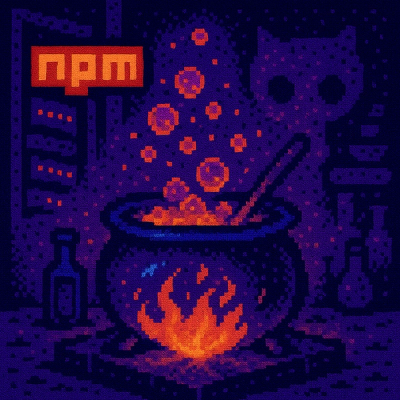
Security News
How Enterprise Security Is Adapting to AI-Accelerated Threats
Socket CTO Ahmad Nassri discusses why supply chain attacks now target developer machines and what AI means for the future of enterprise security.
detect-gpu
Advanced tools
Classify GPU's based on their benchmark score in order to provide an adaptive experience.
Classify GPU's based on their benchmark score in order to provide an adaptive experience.
Make sure you have Node.js installed.
$ npm install detect-gpu
detect-gpu uses benchmarking scores in order to determine what tier should be assigned to the user's GPU. If no WebGLContext can be created or the GPU is blacklisted TIER_0 is assigned. One should provide a HTML fallback page that a user should be redirected to.
By default are all GPU's that have met these preconditions classified as TIER_1. Using user agent detection a distinction is made between mobile (mobile and tablet) prefixed using GPU_MOBILE_ and desktop devices prefixed with GPU_DESKTOP_. Both are then followed by TIER_N where N is the tier number.
In order to keep up to date with new GPU's coming out detect-gpu splits the benchmarking scores in 4 tiers based on rough estimates of the market share.
By default detect-gpu assumes 0% of the lowest scores to be insufficient to run the experience and is assigned TIER_0. 50% of the GPU's are considered good enough to run the experience and are assigned TIER_1. 30% of the GPU's are considered powerful and are classified as TIER_2. The last 20% of the GPU's are considered to be very powerful, are assigned TIER_3, and can run the experience with all bells and whistles.
You can tweak these percentages when registering the application as shown below:
import { getGPUTier } from 'detect-gpu';
const GPUTier = getGPUTier({
glContext?: gl, // Optionally pass in a WebGL context to avoid creating a temporary one internally
mobileBenchmarkPercentages?: [0, 50, 30, 20], // (Default) [TIER_0, TIER_1, TIER_2, TIER_3]
desktopBenchmarkPercentages?: [0, 50, 30, 20], // (Default) [TIER_0, TIER_1, TIER_2, TIER_3]
failIfMajorPerformanceCaveat?: true, // (Default) Fail to detect if the WebGL implementation determines the performance would be dramatically lower than the equivalent OpenGL implementation
forceRendererString?: 'Apple A11 GPU', // (Development) Force a certain renderer string
forceMobile?: true, // (Development) Force the use of mobile benchmarking scores
});
$ yarn start
$ yarn serve
$ yarn lint
$ yarn test
$ yarn build
$ yarn parse-analytics
$ yarn update-benchmarks
My work is released under the MIT license.
detect-gpu uses both mobile and desktop benchmarking scores from https://www.notebookcheck.net/.
The unmasked renderers have been gathered using the analytics script that one can find in scripts/analytics_embed.js.
gpu.js is a JavaScript library for GPU-accelerated computing in the browser. It allows you to run complex computations on the GPU, which can significantly speed up performance for certain tasks. Unlike detect-gpu, which focuses on detecting GPU information, gpu.js is designed for leveraging the GPU for computational tasks.
webgl-detect is a package that helps in detecting WebGL capabilities of the user's browser. It provides information about the WebGL version, supported extensions, and renderer details. While detect-gpu focuses on GPU detection, webgl-detect is more about understanding the WebGL capabilities of the browser.
FAQs
Classify GPU's based on their benchmark score in order to provide an adaptive experience.
The npm package detect-gpu receives a total of 654,739 weekly downloads. As such, detect-gpu popularity was classified as popular.
We found that detect-gpu demonstrated a healthy version release cadence and project activity because the last version was released less than a year ago. It has 2 open source maintainers collaborating on the project.
Did you know?

Socket for GitHub automatically highlights issues in each pull request and monitors the health of all your open source dependencies. Discover the contents of your packages and block harmful activity before you install or update your dependencies.

Security News
Socket CTO Ahmad Nassri discusses why supply chain attacks now target developer machines and what AI means for the future of enterprise security.

Security News
Learn the essential steps every developer should take to stay secure on npm and reduce exposure to supply chain attacks.

Security News
Experts push back on new claims about AI-driven ransomware, warning that hype and sponsored research are distorting how the threat is understood.